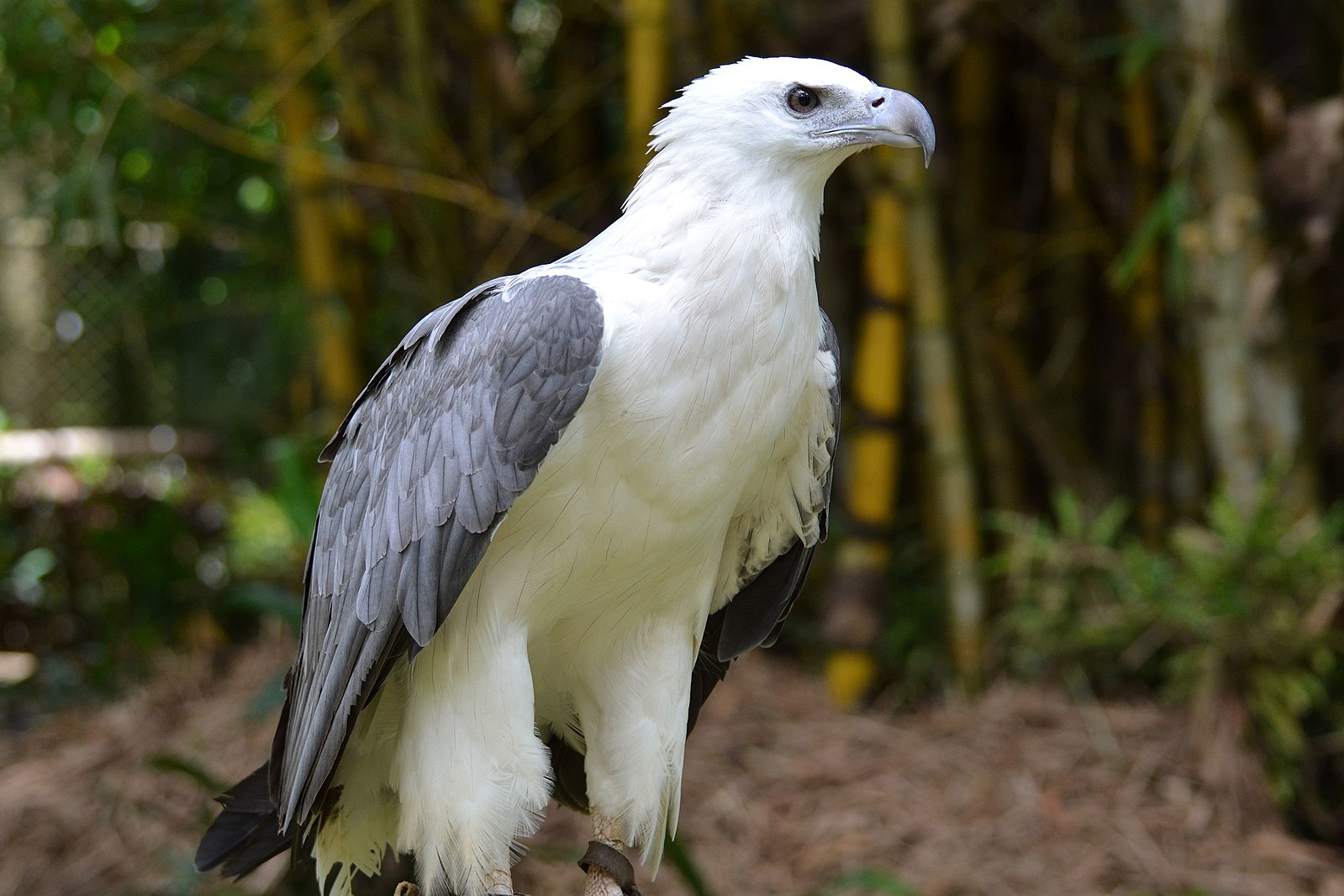White-bellied sea eagles (Haliaeetus leucogaster) are large diurnal birds of prey that are closely related to Sanford’s sea eagles. They are found in coastal areas, islands, and estuaries, as well as in large inland water bodies, lakes, rivers, and wetlands throughout Asia and Australasia, including India, Sri Lanka, southern China, the Philippines, New Guinea, Australia, and Tasmania.
The Exact White-Bellied Sea Eagle Population
According to the IUCN Red List, the total White-bellied sea eagle population size is around 1,000-10,000 individuals, which is around 670-6,700 mature individuals. The population in China has been estimated at around 100-10,000 breeding pairs. Currently, this species is classified as Least Concern (LC) on the IUCN Red List, and its numbers today are decreasing.
Distinctive Features of the White-Bellied Sea Eagle
 Image source: bellied sea eagle by shankar s
Image source: bellied sea eagle by shankar s
Adult white-bellied sea eagles have a white head, rump, and underparts, and dark or slate-grey back and wings. In flight, the black flight feathers on the wings are easily seen when the bird is viewed from below. The large, hooked bill is a leaden blue-grey with a darker tip, and the irides are dark brown. The legs and feet are yellow or grey, with long black talons (claws). Young white-bellied sea eagles in their first year are predominantly brown, with pale cream-streaked plumage on their head, neck, nape, and rump areas. The plumage becomes more infiltrated with white until it acquires the complete adult plumage by the fourth or fifth year.
Habitat and Behavior of the White-Bellied Sea Eagle
The white-bellied sea eagle is a territorial bird, with some birds forming permanent pairs that inhabit territories throughout the year, while others are nomadic. Immature birds are generally dispersive, with many moving over 50 km (31 mi) away from the area they were raised. They are generally found near the water with some forest cover or in rocky areas.
White-bellied sea eagles are apex predators in their ecosystem, controlling populations of many species of fish, birds, mammals, and reptiles. They have a wide range in Asia and Australasia, and are not currently threatened globally. However, they have declined in parts of southeast Asia, such as Thailand, and southeastern Australia due to human disturbance to their habitat, both from direct human activity near nests which impacts on breeding success, and from the removal of suitable trees for nesting.
Nesting and Breeding Habits of the White-Bellied Sea Eagle
The white-bellied sea eagle’s nest is a large deep bowl constructed of sticks and branches and lined with materials such as grass or seaweed. Nests are generally sited in the forks of large trees overlooking bodies of water. Cliffs are also suitable nesting sites, and on islands, nests are sometimes built directly on the ground. The female usually lays a clutch of 2 dull, white, oval eggs that are incubated over 6 weeks before hatching. Eaglets are covered in white down when they emerge from the egg. Although 2 eggs are laid, it is unusual for both chicks to be reared successfully to fledging (leaving the nest). One egg may be infertile, or the second chick may die in the nest. If the first clutch is lost, the parents may attempt a second brood. Eaglets usually fledge when they are 70 to 80 days old, and remain around the parents’ territory for up to 6 months or until the following breeding season. White-bellied sea eagles start breeding at around 6 years of age.
Threats to the White-Bellied Sea Eagle Population
In Tasmania, the white-bellied sea eagle is threatened by nest disturbance, loss of suitable nesting habitat, shooting, poisoning, trapping, and collision with power lines and wind turbines, as well as entanglement and environmental pollution. Estuaries are a favored habitat, and these are often subject to environmental disturbance.
Conclusion
The white-bellied sea eagle is a fascinating and ecologically important bird of prey that plays a crucial role in its ecosystem. While its global population is currently classified as Least Concern, it faces various threats in certain regions, and ongoing conservation efforts are essential to ensure the long-term survival of this magnificent species.
References:
- https://en.wikipedia.org/wiki/White-bellied_sea_eagle
- https://animalia.bio/white-bellied-sea-eagle
- https://peregrinefund.org/explore-raptors-species/eagles/white-bellied-sea-eagle
- http://datazone.birdlife.org/species/factsheet/white-bellied-sea-eagle-haliaeetus-leucogaster
- https://www.sea-eaglecam.org/eagles.html

